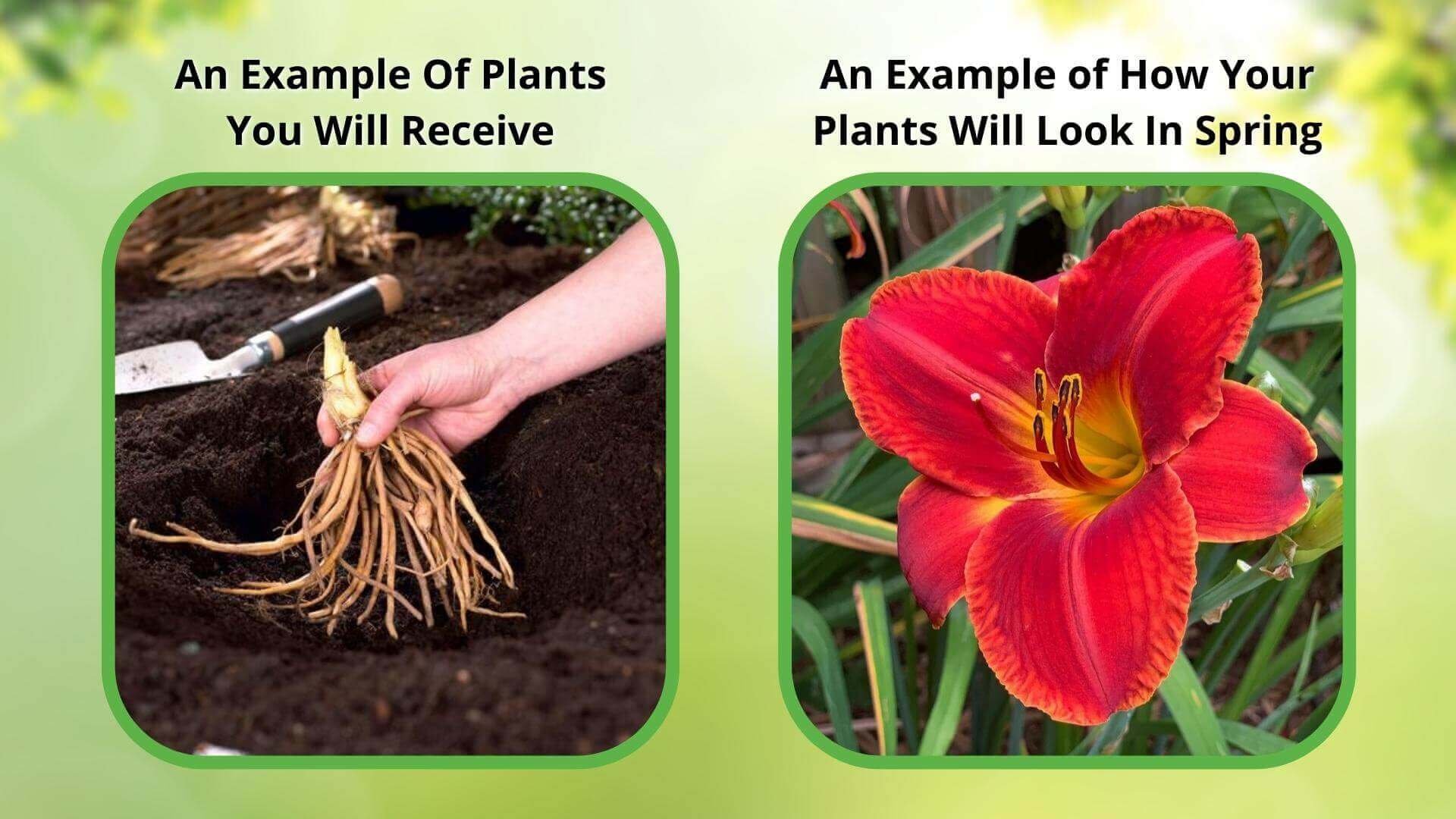



Dandelion Plant
Supports pollinators like bees
Improves soil structure over time
Attracts beneficial insects for gardens
Thrives in
ZONE 3ZONE 4ZONE 5ZONE 6ZONE 7ZONE 8ZONE 9ZONE 10This plant ships:
Ships Week of May 19th1 Year Guarantee on all plants
Dandelion - Taraxacum
The Dandelion is a fascinating plant with a rich, cultural history, particularly as a major irritant of lawn owners in American suburbs. They are native to Europe and Asia, and it's believed they were introduced to the United States via the Mayflower, where people brought them for their medicinal uses. The plant is actually a non-native in North America, but has become naturalized across much of the United States and Canada where it is classified as an invasive species only in Alaska and Oregon. The fluffy, yellow blooms are undeniably gorgeous, and can be found growing just about anywhere – truly, anywhere!
Plant Details - Dandelion
Family: Asteraceae
Light Requirement: Full sun, Partial sun
Water Needs: Moderate
Height: 2-6 in
Spread: 6 in-2 ft
Growth Rate: Rapid
Soil Preference: Well drained, nutrient rich
Bloom Time: Early spring
Flower Color: Yellow, White
Wildlife Value: Bees, Other pollinators
Notable Characteristics - Dandelion
The common Dandelion gets its name for its numerous thin, jagged yellow petals that resemble a lion's tooth, or from the French, ‘dent-de-lion’. The fluffy, yellow flower heads sit atop a hollow stem that secretes a milky liquid when broken, and the narrow, toothed leaves grow straight up from its basal rosette and are not attached to the stem. The flowers are followed by the distinct spherical seed heads. Each seed has a white parachute of feathered hairs which help it catch the breeze and spread seeds far away by riding the wind. Dandelions are also completely edible. Their greens are delicious raw or cooked, the flowers can be brewed into tea or wine, or eaten raw or cooked. There are endless culinary possibilities using this special plant growing just outside your window. It has medicinal uses too including lowering cholesterol and blood sugar or fighting inflammation.
Landscape and Maintenance
They have only a light, floral fragrance, but their nectar still attracts bees and other pollinators, as does its bright yellow color. The yellow plant can be an important source of food for bees and insects in the early spring when few flowers are yet in bloom. These plants are a remarkably rapid self-seeder, with one seed head containing sometimes up to 20,000 seeds, which contributes to its status as a garden and lawn annoyance. To enjoy the plentiful yellow blossoms without them taking over your garden, try deadheading just before the flower goes to seed. Deadhead too early, and the Dandelion will simply regenerate a new flower! This abundant non-native is a very useful, special and beautiful plant. So don’t let the lawn lovers fool you, dandelions are well worth a spot in your garden!
This Is How Your Plants Will Look upon Delivery

Bloom Season
Spring
Bloom/Foliage Color
Yellow
Height at Maturity
Under 12"
Care
Dandelion plants are hardy and adaptable. Water often to keep the soil consistently moist. They flourish in well-drained dirt but can handle a range of conditions. Regularly remove weeds around them to ensure they get enough nutrients. Harvest leaves when young for the best taste.
Plant Reproduction
Dandelion Plant spreads by seeds and by new shoots from roots or root segments
Shipping date depends on the date displayed and chosen when you order from the product's page.
We only accept returns on plants verified dead. If you think your plants have died, we offer a 1 year warranty, please use this File a Claim Link to verify dead plants and start with return warranty process.





.png?v=1722104800928&em-origin=cdn.accentuate.io&em-format=auto)
Edible and Nutritious:
Both the leaves and roots of dandelions are edible and packed with nutrients. They can be used in salads, teas, and other recipes, offering a healthy addition to your diet.
Enhances Soil Health:
Dandelions have deep taproots that help break up compacted soil and improve its structure. They also bring nutrients from deeper layers of soil to the surface, benefiting nearby plants and enhancing overall soil quality.
Bright and Joyful Blooms:
Dandelions offer vivid yellow flowers that bring a joyful and lively touch to any garden. Their sunny appearance can enhance the beauty of your outdoor area.
Easy to Grow:
Dandelions are extremely resilient and need minimal care to flourish. They thrive in diverse soil types and conditions, making them ideal for gardeners of all experience levels.
Caring Tips
How do I care for my Dandelion Plant?
Each box contains detailed care instructions and information about your product. But here's the basics.
Care Tips
Dandelion plants are hardy and adaptable. Water often to keep the soil consistently moist. They flourish in well-drained dirt but can handle a range of conditions. Regularly remove weeds around them to ensure they get enough nutrients. Harvest leaves when young for the best taste.
Light Requirements
Dandelion plants thrive in full sun to partial shade. They prefer direct sunlight but can also adapt to less intense light conditions. However, ample sunlight encourages more vigorous growth and better flowering.
Hardy Planting Zones
3 • 4 • 5 • 6 • 7 • 8 • 9 • 10
Header
Use this content to share information about your store and products.
Frequently Asked Questions
How often should I water my plants?
How do I know if my plant is getting too much or too little sunlight?
What should I do to prepare my plants for winter?
What are the signs that my plant needs fertilizing?
How can I prevent pests from damaging my plants?
How do I choose the right plant for my climate zone?






